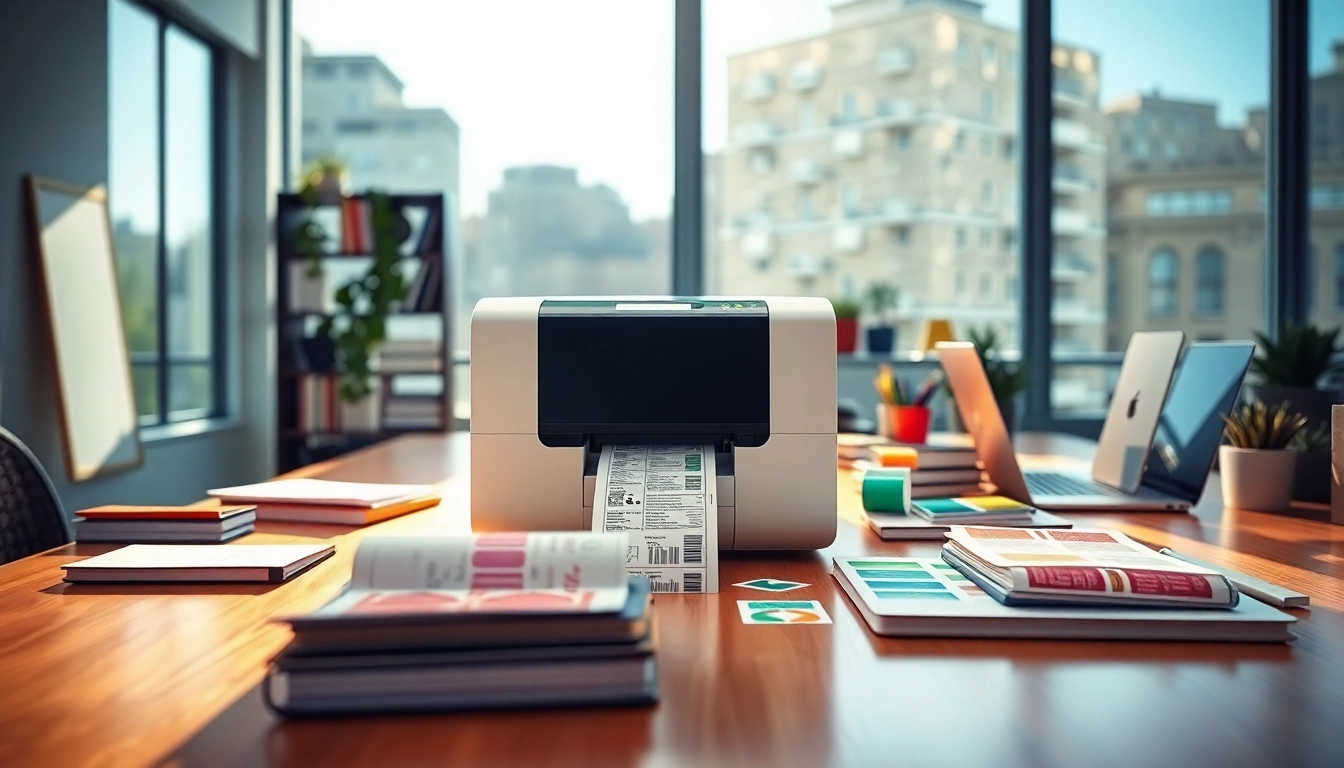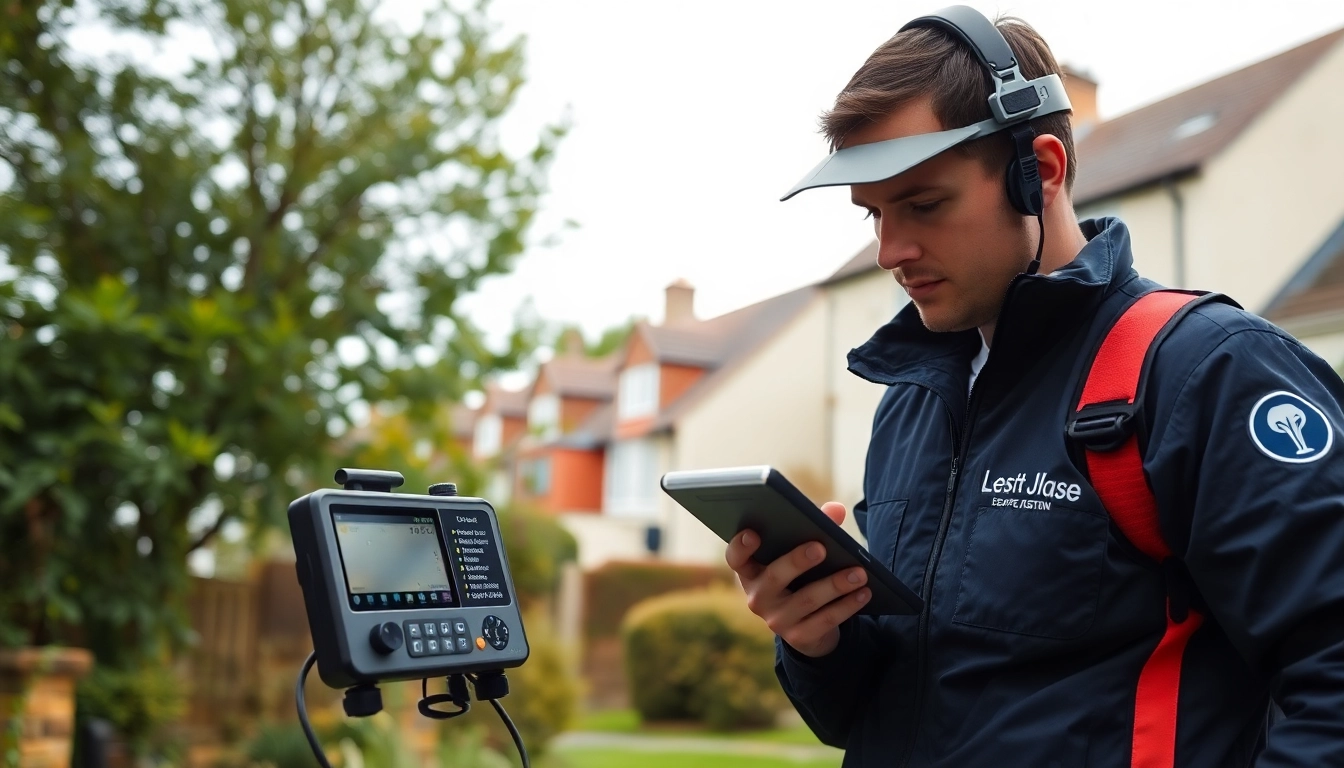Understanding Label Printers
What is a Label Printer?
Label printers are specialized devices designed for printing labels. They can produce various formats, including shipping labels, barcodes, and product labels. Unlike standard printers, label printers utilize different printing technologies tailored for label media, such as thermal printing or inkjet methods. With advancements in technology, modern label printers are often compact, making them suitable for both home and office environments. For those looking for reliable label solutions, a dedicated label printer can simplify tasks dramatically.
Advantages of Using a Label Printer
Label printers offer numerous benefits that make them an attractive solution for businesses and individuals alike:
- Efficiency: Label printers can produce professional-quality labels quickly, making them ideal for businesses that require constant labeling.
- Customization: Users can create custom designs, print variable data (like names and addresses), and even manage inventory labels with great precision.
- Cost-Effective: While there is an upfront cost for a label printer, the potential savings from printing your own labels can be significant, especially for businesses facing high labeling demands.
- Space-Saving: Many label printers are compact, which is a great advantage for offices or home use where space is at a premium.
Different Types of Label Printers
Label printers can be categorized into a few main types based on their printing technology and applications:
- Laser Label Printers: These printers work by using laser technology to produce high-quality labels, often used for bulk printing projects.
- Inkjet Label Printers: Inkjet printers are favored for producing vivid colors and high-resolution images, ideal for product labels and marketing materials.
- Thermal Label Printers: These printers use heat to transfer ink onto the label material, making them incredibly efficient and cost-effective for labels that do not require color.
- Handheld Label Printers: Compact and portable, these printers are ideal for on-the-go labeling needs such as organizing events or tagging items around the house.
Choosing the Right Label Printer for Your Needs
Factors to Consider When Buying a Label Printer
When selecting a label printer, consider the following factors to ensure it meets your specific requirements:
- Intended Use: Consider what types of labels you’ll be producing. If you need high-quality images, an inkjet or thermal transfer printer may serve you better.
- Speed and Volume: Evaluate the printer’s speed and its capability for high-volume printing, especially if you manage business operations with frequent label requirements.
- Connectivity: Ensure the printer you choose supports the necessary connectivity options—USB, Wi-Fi, Bluetooth—to integrate seamlessly into your current setup.
- Cost of Supplies: Investigate the ongoing costs associated with ink, labels, and other consumables, as these can add up over time.
- Size & Portability: If space is an issue or you require mobility, look for a compact design that enables easy transport.
Comparison of Popular Label Printer Brands
Several brands dominate the label printer market, each with its strengths and weaknesses:
- Brother: Known for its reliable and versatile printers, Brother offers models like the QL-800 which are favored for home and business applications.
- Dymo: Dymo is recognized for its user-friendly label makers, especially beneficial for small businesses wanting easy solutions for quick labeling tasks.
- Primera: With professional color label printers, Primera focuses on high-quality custom labels and is preferably used by companies looking for marketing applications.
- Epson: Offering a diverse range of printers, Epson combines advanced technology with efficiency, making their models suitable for both home offices and large enterprises.
User Reviews and Recommendations
Feedback from existing users can be invaluable in determining the best label printer for your needs. Most reviews highlight aspects such as print quality, reliability, and customer support. For instance, users of the Brother QL-800 often praise its ease of use and compatibility with various label types. Conversely, Dymo models may receive feedback for their compact designs but sometimes noted limitations in volume capacity.
Setting Up Your Label Printer
Installation Steps for New Users
Setting up a new label printer involves a few straightforward steps to ensure it operates effectively:
- Unbox the printer and remove any protective materials.
- Connect the power adapter and turn on the printer.
- Install the print head and load labels as per the manufacturer’s instructions.
- Download and install any necessary drivers from the manufacturer’s website.
- Conduct a test print to verify functionality.
Connecting to Your Computer or Network
For most label printers, connection can be established either through USB or wireless methods. Ensure that:
- USB connections are securely fitted. If using wireless, have your network credentials ready.
- Use the provided software to configure any network settings required for use.
- Check for any updates from the manufacturer to ensure optimal operation post-setup.
Troubleshooting Common Issues
Despite their reliability, users may encounter issues with label printers. Here are quick solutions:
- Paper Jams: Regularly check and clean the paper feed area to prevent jams.
- Poor Print Quality: Clean the print head and ensure that you’re using the correct label media.
- Connection Problems: Verify cable connections or Wi-Fi settings; consider reconnecting to your network if using wireless.
Maximizing the Use of Your Label Printer
Creative Applications for Label Printing
Label printers are not limited to mere business tasks. Here are some creative and practical applications:
- Organizing home offices with personalized labels for files, folders, and storage boxes.
- Creating custom gift or party labels for jars and packaging, adding a personal touch to gifts.
- Making labels for plants in gardens, ensuring that all species are clearly marked for easy identification.
- Utilizing labels for personal crafts, including scrapbooking, adding a professional look to DIY projects.
Using Label Printers for Business Organizations
In a business context, label printers can streamline several operations:
- Inventory Management: Label products with QR codes that link to online inventories, making stock checks more efficient.
- Shipping: Print shipping labels directly at your location, saving time and allowing for more fluid operations.
- Branding: Create high-quality product labels that enhance product visibility and brand recognition.
Cost-Effective Label Printing Tips
To maximize savings while utilizing a label printer, consider the following tips:
- Buy label materials in bulk to save costs per unit.
- Regularly maintain your printer to prevent costly repairs and inefficiencies.
- Opt for compatible or generic labels that often offer the same quality at a lower price point.
Future Trends in Label Printing Technology
Emerging Technologies in Label Printing
As technology evolves, label printing is anticipated to witness revolutionary changes. Emerging trends include:
- Smart Labeling: Integration with IoT devices to facilitate tracking and monitoring of products.
- 3D Printing: Innovations may lead to the creation of 3D labels providing unique visual and functional features.
- Automation: Increased automation in labeling processes to minimize human error and enhance productivity.
Sustainable Practices in Label Production
The demand for eco-friendly labeling solutions is rising. Companies are focusing on:
- Biodegradable label materials to reduce environmental impact.
- Using soy or vegetable-based inks as a sustainable alternative to traditional inks.
- Implementing energy-efficient production methods to lessen carbon footprints.
Predictions for Label Printers in the Next Decade
With the rapid advancement in technology, the future of label printers is promising:
- By 2030, we may see widespread adoption of label printers that incorporate advanced AI for automating design processes.
- Personalized labels generated via cloud technology could become the norm, allowing for real-time updates and modifications.
- Smart labels integrating additional features such as scannable codes for users to connect with a digital interface for product details.



